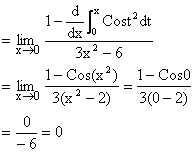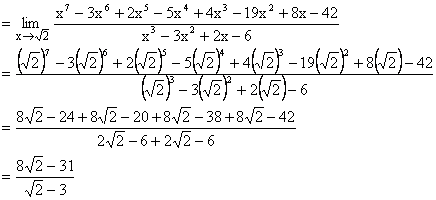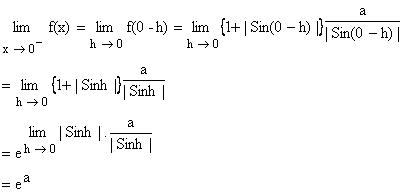study material-mathematics-differential calculus
limit-continuity-5
1) Prove that ![]()
Solution:
![]() And
And ![]() so
so ![]() assumes the indeterminate form 0/0 when x tends to 0.
assumes the indeterminate form 0/0 when x tends to 0.
We know for ![]()
Sinx < x < Tanx

This is true for x>0, the same holds when x<0 in that Sin (-x)/ (-x) = ![]() and
and
Cos (-x) = Cosx.
Now since ![]() , it follows from sandwitch theorem,
, it follows from sandwitch theorem,
![]() .
.
2) Find the value of  .
.
Solution: As 
\ ![]()
Where ![]()
![]()

3) Evaluate ![]() .
.
Solution:

4) Evaluate  .
.
Solution:

Applying L-Hospital’s Rule we get,

5) Find ![]() .
.
Solution:
For ![]() both the numerator and denominator are 0.
both the numerator and denominator are 0.

Given [x2-2 ¹ 0].

6) If  then find the values for a and b.
then find the values for a and b.
Solution:
We have 
Since, limit of above expression is a finite non-zero number.
\ degree of numerator = degree of denominator
Þ 1-a = 0 Þ a = 1
\ Putting a = 1 in above limit we get
![]()
Þ - (1+b) = 2 Þ b = -3
Hence a = 1 and b = -3.
7) Let ![]()

Determine a and b such that f(x) is continuous at x=0.
Solution:
Since f(x) is continuous at x=0.
Therefore R.H.L = L.H.L = f (0)
R.H.L at x = 0.

Again L.H.L at x = 0

And f (0) = b ------ (2)
